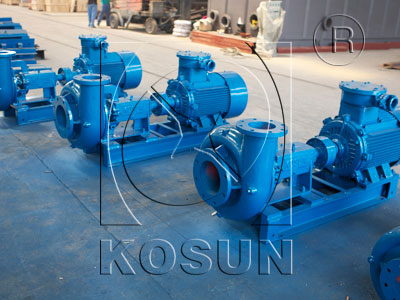The abnormal operating conditions of centrifugal pumps
2013-08-27
The hydraulic performances of centrifugal pumps were widely studied experimentally over the last century, for normal operating modes close to the nominal operating point. For specific states of flow, the unsteady behaviour of the flow due to the rotor/stator interactions formed the subject of many studies. The experimental study of these unsteady phenomena requires complex and/or expensive experimental methods such as the use of dynamic pressure sensors or strain gauges installed on the pump shaft, and, as a result, the numerical approach becomes a real alternative. As a matter of fact, CFD computations have been commonly used for approximately twenty years to predict the hydraulic performance of rotating machines. First of all, CFD computations made it possible to study and improve the design of blades. For that purpose, the use of periodical conditions became a means to reduce the size of the computational domain as well as the CPU time. Furthermore, it was possible to use a steady state approach to study operating points located close to the best efficiency point. Then, to study the rotor/stator interactions, the complete geometry of the pump needs to be integrated into the numerical model; it is also necessary to simulate these flow configurations in a transient manner in order to correctly predict all potential hydrodynamic instabilities. Nevertheless, although many projects focus on rotor/stator interactions, very few of them propose comparisons between numerical and experimental results. The only existing results concern the fluctuating pressure field at impeller outlet.

Even if a few studies focused on the abnormal operating conditions of centrifugal pumps, this subject has been much less studied, but it has become again a point of interest over the past 5 years. On the one hand, accident scenarios can be integrated into the test specifications, and therefore the performances of the pump operating in abnormal conditions have to be known. On the other hand, a growing number of small hydroelectric power stations are being developed due to their extremely attractive operating costs. However, the initial investment for the equipment is rather high. This is why the use of standard range centrifugal pumps operating in turbine mode has become a credible alternative to hydraulic turbines since their much lower cost and the wide variety of machines make it possible to significantly reduce equipment costs. Consequently, centrifugal pumps as turbines have become the main subject of an increasing number of studies, and the first work started approximately twenty years ago. The main objective of these studies concerns the analytical development of correlations whose purpose is to assess the hydraulic performance of the machine running in turbine mode, based on its pump operation characteristics. The use of CFD computations is rather new for simulating the flow generated in the pump and for optimising the design of PATs. However, numerical results become all the more credible when they are accompanied by experimental results.
News
- 07-11Technical features of using KOSUN drilling waste mud treatment system
- 07-07Main equipment of solids control system in drilling
- 06-26Geothermal well mud treatment system manufacturer—KOSUN solid control
- 06-26The key to achieving mud zero discharge is on-site processing after solid-liquid separation
- 05-10Application Scenarios of KOSUN Drilling Waste Treatment Equipment
- 05-10Environmental protection new regulations require to achieve zero discharge of drilling waste
- 05-09KOSUN Solid-liquid Separation Equipment is used in the construction industry
- 04-19What are the main functions of the Mud Agitator during use?
- 04-15The Advantages of KOSUN's trenchless horizontal directional crossing mud recovery system
- 03-15Vacuum degasser is mainly divided into centrifugal degasser and jet degasser




